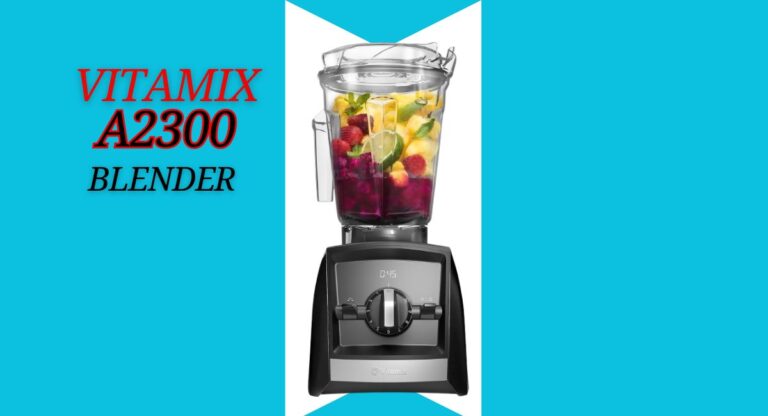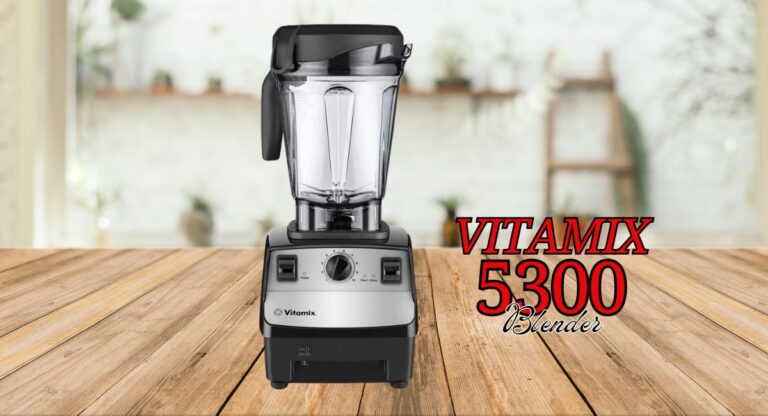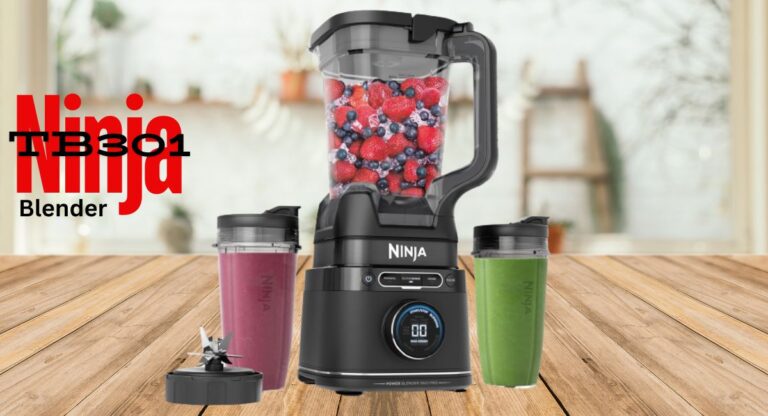KitchenAid K150 Blender Review: Is this Best for USA Users in 2025?
Are you tired of using a blender that just can’t keep up with your kitchen demands? Do you dream of whipping up smoothies, soups, and sauces with ease? If so, you’re in the right place! The KitchenAid K150 blender is a popular choice among home cooks and professionals alike, but is it really the best option for USA users in 2024?
In this review, we’ll dive into all the details you need to know about the blender. We’ll look at how well it performs, its design, and whether it’s worth the price. With its sleek design and impressive features, the KitchenAid K150 seems like a great choice, but what really sets it apart from other blenders on the market? Let’s take a closer look at its performance, design, and value to see if it’s the right fit for you.
Overall Design and Size Testing

So, how big is the KitchenAid K150? Well, it’s actually pretty small compared to other full-size blenders out there. It’s only 14.8 inches (37.6 cm) tall, which is super easy to fit on your countertop. The width is also nice and narrow, coming in at 7.2 inches (18.2 cm). And the depth is a reasonable 9.1 inches (23.1 cm), so you can tuck it away in a corner or against a wall without taking up too much space.
As for how heavy it is, the KitchenAid K150 is pretty light, weighing in at just 8.4 pounds (3.8 kg). That’s easy to lift and move around, even if you’re not super strong.
One of the best things about the KitchenAid K150 is how easy it is to store. You can leave it on your counter, where it’s always ready to go, or stash it in a cupboard when you’re not using it. It’s really similar in size to the Oster Pro 1200, another popular blender. And because it’s so compact, you can have all the blending power you need without taking up too much space in your kitchen.
Jar Capacity and Material with LID Testing

When it comes to the main jar capacity of the KitchenAid K150 blender, you’ll be pleased to know that it can hold a respectable 48.0 ounces (1,420 ml) of your favorite ingredients. While this may be smaller than some other full-size blenders on the market, like the KitchenAid K400, it’s still plenty of room to whip up a batch of your favorite smoothie or soup. And don’t worry, there’s no additional jar capacity to worry about – this is the main event!
The good news is that it’s made from BPA-free plastic, which is safe for you and your family. And when it comes to cleaning, you’ll be happy to know that the jar and lid are both dishwasher safe. Just be sure to put the jar and non-removable blades on the bottom rack, and the lid and center cap on the top rack. Unlike Vitamix 5200 and 7500 blenders, their parts are not safe for dishwasher.
The lid of the jar is a two-part design, which is really convenient. It’s made of plastic, with rubber-like grooves on the bottom of its lip to create a friction seal. This means that the lid will stay securely in place while you’re blending, but it’s still easy to remove when you need to add more ingredients or pour out your finished product.
Speaking of adding ingredients, you can remove the center cap to do so, and it’s even marked as a measuring cup for up to 45ml or 1.5 ounces. When you’re done, just toss the lid and center cap in the dishwasher’s top rack for an easy clean.
Motor Base and Built Quality Testing
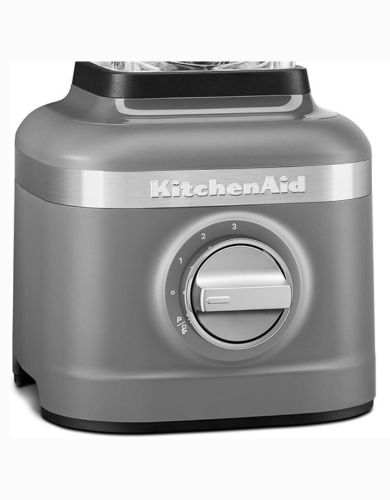
One of the reasons for this is that the transmission gears inside the jar are actually made of steel, which gives them a heavy-duty feel. And when you look at the control dial, you’ll notice that it’s made of metal, which adds to the overall sense of durability.
When you’re actually blending, the jar feels incredibly stable and sturdy. It’s like it’s glued to the countertop, and you can tell that it’s designed to handle even the toughest blending tasks with ease.
However, there is one small drawback: the handle doesn’t feel particularly comfortable to hold. It’s not a deal-breaker by any means, but it’s something to keep in mind if you plan on using the blender frequently.
Blade Quality and Performance Testing
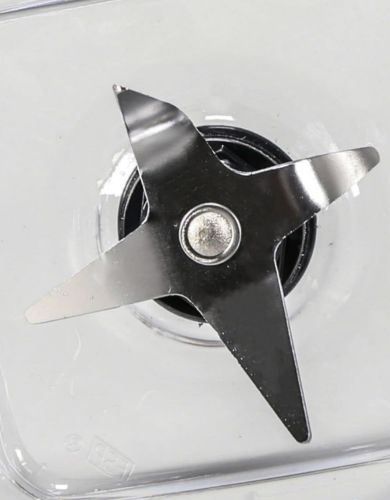
There are a few things to know about the blades of this machine. First, they’re sharp, which is great for breaking down tough ingredients like ice, nuts, or seeds. This means you can blend all sorts of things, from smoothies to soups, without worrying about leaving behind any chunky bits. And with four blades in total, you can be sure that everything gets thoroughly mixed and blended.
One thing to keep in mind, though, is that the blades aren’t removable from the jar. This can make cleaning a bit more tricky, since you can’t just take them out and wash them separately. However, the good news is that they’re dishwasher safe, as long as you put them on the bottom rack. This means you can still get them clean without having to scrub them by hand.
Now, let’s talk about the speed of the blades. When you’re blending, you want to make sure that the blades are moving fast enough to get the job done. On the KitchenAid K150 blender, the minimum speed is a respectable 4,000 RPM, which is plenty fast for most blending tasks. And if you need even more power, the maximum speed is a whopping 11,600 RPM. That’s some serious speed, and it’s perfect for tackling tough ingredients like frozen fruit or thick sauces.
Of course, all this speed requires some serious power, and this KitchenAid blender has got it. The blender itself has a 650 W motor, which is more than enough to handle even the toughest blending tasks. Whether you’re making a smoothie, a soup, or something else entirely, you can be sure that the blender has the power to get the job done.
When it comes to adjusting the speed, you’ve got three preset options to choose from using the speed dial. It’s easy to use, and you can quickly switch between the different speeds as needed. For example, you might use the low speed for mixing together a few ingredients, the medium speed for blending a smoothie, and the high speed for tackling tough ingredients like ice or nuts. The speed dial is easy to use, and it’s clear which speed you’re on at any given time.
One thing to note, though, is that there are no increments between the speed markings. This means you can’t fine-tune the speed to get exactly the right blend. For example, if you want a speed that’s halfway between the low and medium settings, you’re out of luck. This is a bit of a drawback, especially when compared to other blenders like the KitchenAid K400, which does offer more precise speed control. Still, the three preset options should be enough for most users, and the blender is easy to use overall.
Performance Testing
Making Soups
The KitchenAid K150 is an excellent blender, especially when it comes to making soups. One of the standout features of this blender is its ability to create smooth, hot soups. In fact, it scored an impressive 86 in this particular test. That high score speaks to its overall performance in this area.
The build quality of the KitchenAid K150 is solid and reliable. It’s designed to handle hot blending, which is great if you prefer a smooth, warm soup straight from the blender. Whether you’re using fibrous ingredients like kale or broccoli, this blender can turn them into a smooth and creamy consistency, free of any grainy texture.
That said, we noticed few things that are important to note. The KitchenAid K150 isn’t the fastest blender on the market. So, if you’re in a hurry, it may take a bit longer to get your blend just right. Additionally, the blender jar has a capacity of 48 ounces, which is a bit small for a full-size blender. This means it may not be the best option if you need to make large batches at once. If you need good texture of your soups, so you must check Ninja Chef Blender CT810 or Vitamix E310 Blender.
Nut Butter

I was impressed by its ability to handle tough ingredients like nuts and seeds, and the result was a deliciously smooth and spreadable nut butter.
That being said, making nut butter with the KitchenAid K150 blender is not a quick or easy process. You’ll need to stop the blender frequently to scrape the sides of the jar with a spatula, which can be a bit of a hassle. However, with a little effort, the outcome is definitely rewarding.
One tip to keep in mind is to use the two slower speed presets when making nut butter. This is because the fastest setting can be a bit too powerful, and it may fling the ingredients to the sides of the jar and away from the blades. By using the slower speeds, you can ensure that the blades are able to break down the ingredients evenly and efficiently.
Despite the occasional need to stop and scrape the sides of the jar, I found the process of making nut butter with the KitchenAid K150 blender to be reasonably easy. And the result was well worth the effort – the nut butter was incredibly smooth and spreadable, with a texture that was just right.
Overall, I gave the KitchenAid K150 blender a score of 75 for nut butter preparation and 96 for nut butter texture. While it may not be the easiest or fastest way to make nut butter, the result is well worth the effort, and the blender is definitely up to the task.
Smoothies and Fibrous Ingredients


So, I decided to put the KitchenAid K150 blender to the test by making a smoothie that’s a staple in my household. It’s a breakfast smoothie that’s packed with nutrients, and it’s a favorite among my family members. The ingredients I used were coconut milk, oats, protein powder, peanut butter, yogurt, ice, and frozen raspberries. And since I was making enough for two hungry adults, the blender was pretty much filled to its maximum capacity.
I started blending the ingredients on the lowest speed setting, which is speed one. As the blender began to break down the ingredients, I gradually increased the speed to the maximum setting. I let it blend for about a minute, and then I stopped it to taste the smoothie. However, it wasn’t quite smooth enough for my liking, so I decided to blend it for another minute at the maximum speed.
After blending for an additional minute, I stopped the blender and tasted the smoothie again. This time, it was perfect! The texture was smooth and creamy, with only a slight grittiness from the raspberry seeds. But overall, the blender did an excellent job of combining and liquidizing all the ingredients into a tasty and refreshing drink.
It’s worth noting that the blender handled the tough ingredients like ice and frozen raspberries with ease, and it didn’t struggle at all even when the jar was filled to its maximum capacity. The motor was powerful and efficient, and it didn’t make a lot of noise or vibrate excessively during the blending process. Overall, I was impressed with the blender’s performance, and I’m confident that it can handle even the toughest blending tasks with ease.
I was blown away by its performance, especially when working with small batches of ingredients like kale or spinach.
When I made a single-serve smoothie with kale, I was worried that the blender might struggle to break down the tough fibers. But to my surprise, it handled the task with ease. The only thing I had to do was use a spatula to push the ingredients down towards the blades a few times, since they tended to splash up the sides of the jar. But other than that, the blender did its magic and produced an incredibly smooth blend.
I was impressed by the blender’s performance, and I gave it a score of 84 for fibrous ingredients processing and 96 for fibrous ingredients texture. The result was a silky-smooth blend that was perfect for drinking.
But what about larger batches of fibrous ingredients? I was curious to see how the blender would perform when faced with a bigger challenge. So, I made a big batch of smoothies and broccoli soup, and I was thrilled to see that the blender handled it like a pro.
It didn’t take too long to process the ingredients, and the result was a very smooth puree. Of course, the texture was a little grainier than when I was working with a smaller batch, but that’s to be expected. Overall, I was impressed by the blender’s performance, and I gave it a score of 93 for fibrous ingredients processing and 88 for fibrous ingredients texture.
It’s clear that the KitchenAid K150 blender is a powerful tool that can handle even the toughest fibrous ingredients with ease.
Easy to Use Testing

Let’s take a closer look at the features of the KitchenAid K150 blender. One thing you might notice is that it doesn’t have an on/off switch, which is a bit unusual. Instead, you’ll need to use the speed dial to control the blender’s operation.
Speaking of the speed dial, it’s a convenient feature that allows you to easily switch between three different speed presets. This is great for when you need to blend different types of ingredients or achieve a specific texture.
One of the blender’s standout features is its ability to handle hot blending, which is perfect for making soups or other hot liquids. It also has a pulse/turbo mode, which is great for adding an extra burst of power when you need it.
However, if you’re looking for a blender with more advanced features, you might be disappointed. The KitchenAid K150 blender only has a crushed ice setting, and its third speed can be used as a cleaning cycle, but it’s not a dedicated self-cleaning program. If you want a blender with more preset programs for different types of recipes, you might want to consider the Calphalon ActiveSense instead.
Additionally, the KitchenAid K150 blender doesn’t have a blending time indicator, which means you’ll need to keep an eye on the clock yourself. And, it doesn’t have a programmable timer, which can be a bit of a drawback if you like to set your blender to run for a specific amount of time.
Cleaning Testing
Cleaning the KitchenAid K150 blender is a breeze. For most non-sticky foods like smoothie residue, a quick rinse is all you need to get rid of any leftover bits. And if you need to do a deeper clean, a 60-second blend of hot water and soap is usually enough to get the job done.
However, when it comes to stickier foods like almond butter, things can get a bit more complicated. You’ll need to use a soft dish sponge to get under some of the parts of the lid or the jar walls, which can be a bit of a pain. And speaking of the jar, it can be a little tricky to clean because of the non-removable upward-pointed blades. You’ll need to be careful to get around them without scratching the jar or the blades.
If you’re looking for a blender that’s even easier to clean, you might want to consider the Ninja Foodi Cold & Hot Blender. It’s designed with easy cleaning in mind, and it’s a great option if you’re short on time or don’t want to deal with any hassle.
Noise Level Testing
In fact, this small blender is even quieter than many full-size blenders we’ve tested, which is a big plus. For example, the Ninja Tb301 and Ninja Tb201, both of which are larger blenders, are actually louder than the KitchenAid K150. This is great news for anyone who plans to use their blender during early morning hours or in a quiet kitchen.
The KitchenAid K150 blender is actually quite impressive. When running at its maximum speed, it produces a noise level of 88.8 decibels, which is relatively quiet compared to many other blenders on the market.
It’s worth noting that the noise level of the KitchenAid K150 blender is still noticeable, of course. But compared to many other blenders, it’s definitely on the quieter side. And if you’re looking for a blender that won’t disturb the whole household, this one is definitely worth considering.
Final Verdict
So, is the KitchenAid K150 the best blender for USA users in 2024? In our opinion, it’s definitely a top contender. With its powerful motor, intuitive design, and impressive performance, this blender is a great choice for anyone who wants to take their cooking to the next level. Yes, it may be a bit pricier than some other options on the market, but trust us, it’s worth it.
This blender is built to last, and with its 5-year warranty, you can have confidence that it will be a valuable addition to your kitchen for years to come. Whether you’re a busy parent, a foodie, or just someone who loves to cook, this blender is a great investment. So, if you’re looking for a high-quality blender that will help you whip up delicious meals and drinks with ease, the KitchenAid K150 is definitely worth considering.


